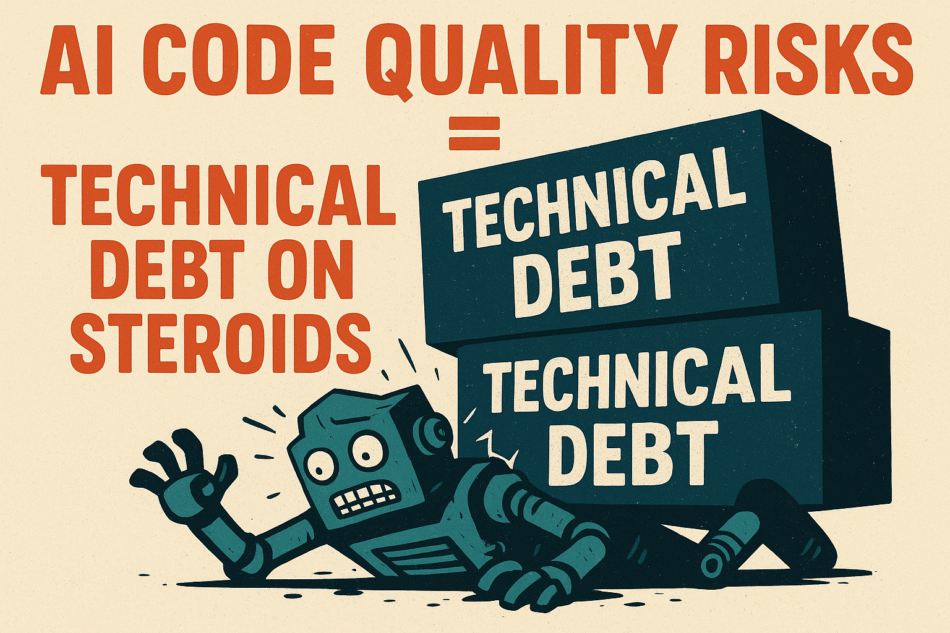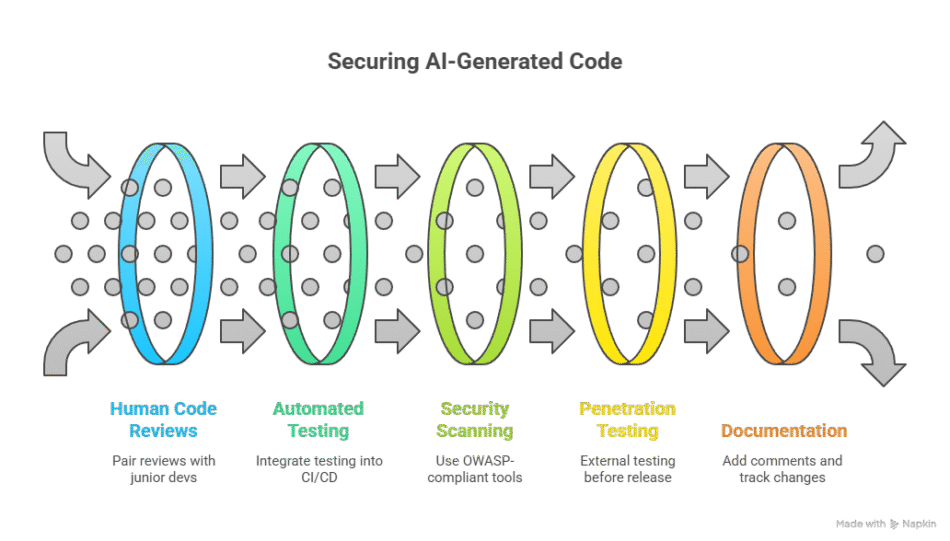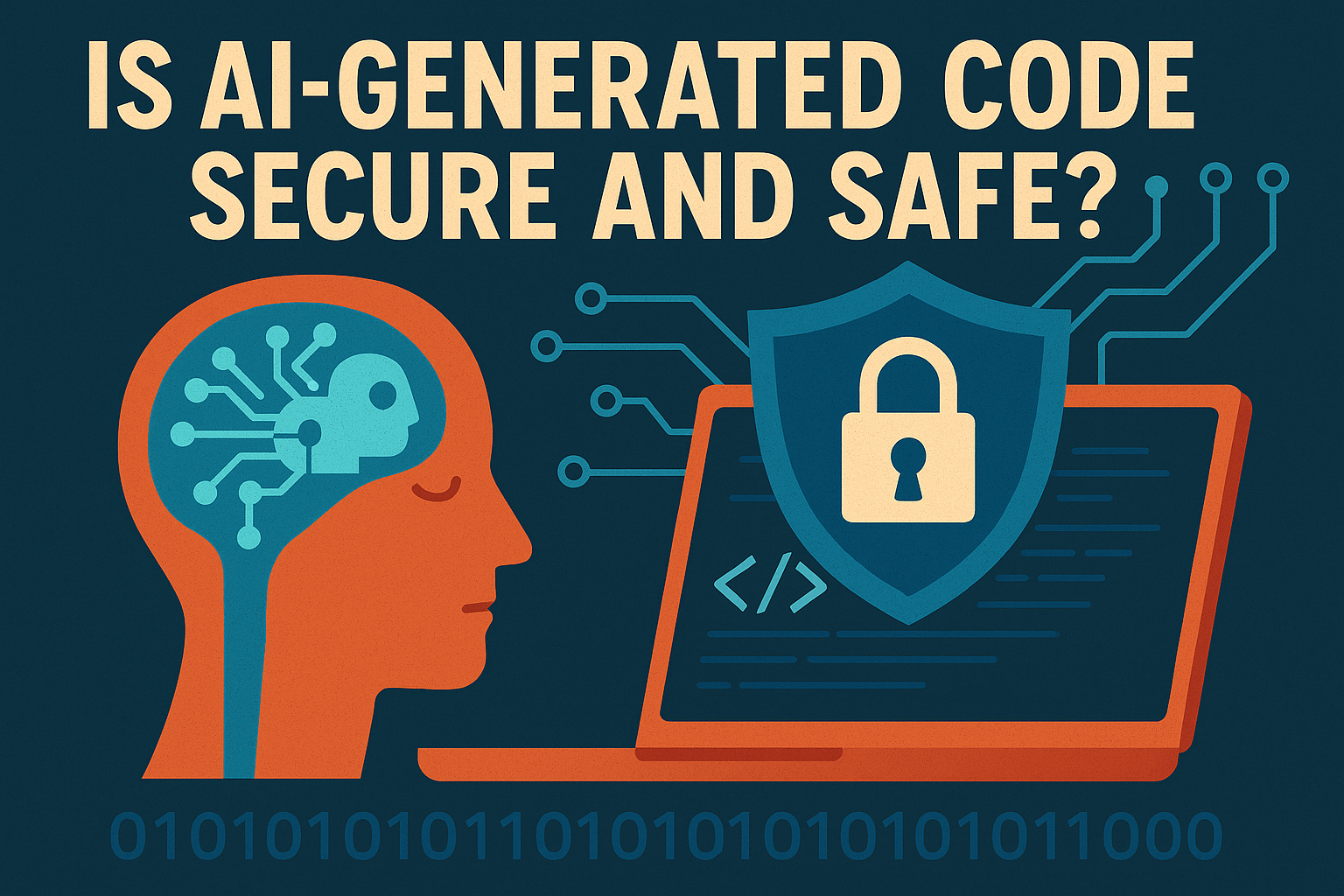Is AI-Generated Code Secure and Safe?
The rise of generative AI tools like GitHub Copilot and ChatGPT has changed how developers approach coding. Projects that once took weeks can now be scaffolded in hours. But the speed comes with a question that’s critical for anyone managing digital products: Can you trust AI-generated code to be secure, scalable, and maintainable?
In this post, we’ll break down the reliability of AI-assisted coding, the common risks developers face, and the best practices for AI-assisted coding that keep your software fast—but not fragile.
Quick Summary:
- Is AI-generated code reliable? Not by default—it must be reviewed, tested, and secured.
- AI code often hides security flaws, logic errors, and poor documentation.
- Testing AI-generated code for security is a must, especially in customer-facing apps.
- To mitigate AI code quality risks, combine automated tools with human oversight.
- Trust is earned—learn how to trust AI-generated code the smart way.
The Problems with AI-Generated Code You Can’t Ignore
Just because AI can write code doesn’t mean you should let it go live unchecked. The reality is, problems with AI-generated code are more common than the hype suggests.
- Hidden bugs in AI code often go unnoticed until deployment—or worse, after.
- AI-generated logic might be syntactically correct, but semantically flawed, creating unpredictable behavior under edge cases.
- Many AI coding tools are trained on legacy or insecure patterns, leaving gaps in encryption, input validation, or session handling.
- AI doesn’t document its decisions, leaving dev teams to decipher opaque outputs months later.
If you’re in a regulated industry—finance, healthcare, or cannabis—this is more than inconvenient. It’s a liability.

AI Code Quality Risks = Technical Debt on Steroids
The convenience of AI can breed complacency. Companies that treat AI output as finished work often find themselves buried in technical debt, security vulnerabilities, and inconsistent codebases. That’s a high cost for something that was supposed to save time.
And let’s not forget version control chaos: AI-generated suggestions often skip naming conventions, refactor considerations, or project-specific standards. Over time, this creates fragmentation—and your devs pay the price.
To avoid it, your workflow must evolve.
Best Practices for AI-Assisted Coding (That Actually Work)
Whether you’re prototyping or deploying production apps, here’s how to keep AI productive without sacrificing code quality:

1. Always Run Human Code Reviews
This should be table stakes. Even the most advanced AI can’t predict context or company-specific logic. Pair review sessions with junior devs to boost education and catch errors. It’s one of the simplest ways to start securing AI-generated applications.
2. Implement Automated Testing Pipelines
Testing AI-generated code for security isn’t optional. Integrate static code analysis, unit testing, and integration tests into your CI/CD pipeline. For sensitive applications, use fuzz testing and red team reviews.
If your dev team is stretched thin, Digital Goliath’s AI services can help automate the setup and flag code risks before they escalate.
3. Apply Security Scanning + Pen Testing
Scan all AI-written code with OWASP-compliant tools. Pair that with external penetration testing before production releases. Especially important if you’re using AI tools to build customer-facing systems.
4. Document Changes for Future Developers
AI doesn’t comment code. You need to. Keep commit messages clean, add inline comments where logic isn’t obvious, and use internal wikis to track generated modules or components. We also offer blog and content management services that help development teams create scalable, documented workflows.
How to Trust AI-Generated Code (Without Losing Sleep)
If you’re wondering how to trust AI-generated code, here’s the deal: you don’t trust it blindly—you verify it systematically.
You build checks into every stage:
- Code generation → reviewed
- Integration → tested
- Deployment → scanned
- Maintenance → documented
This isn’t about fear-mongering. It’s about maturity. Your competitors will fall for the “AI = free devs” illusion. You won’t. You’ll scale smarter.
Final Thoughts: Use AI, But Don’t Worship It
AI will never replace solid engineering practices. It’s a powerful tool, not a replacement for human judgment. And while the promise is huge, so is the fallout if you skip the basics.
At Digital Goliath, we help fast-moving teams integrate AI responsibly—whether that means reviewing AI-assisted code, building secure frameworks, or scaling with automation that doesn’t crumble under load.
Need help figuring out where AI fits safely into your workflow? Talk to us today. Let’s keep your stack secure, your team efficient, and your reputation intact.
Want more insights like this? Check out our take on programmatic SEO and how automation is changing digital strategy—just like it’s changing code.


